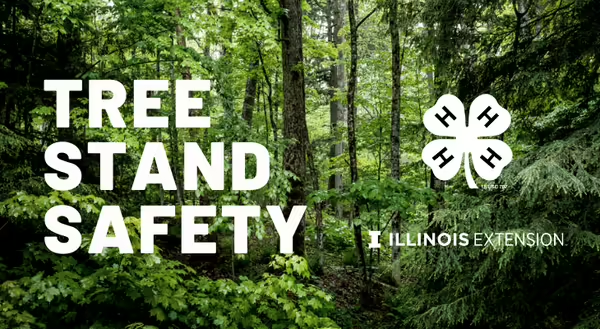
It wasn’t that long ago a teenage boy was working a part-time job at a family-owned tree nursery when he was privy to a conversation between the business owners about the loss of young trees due to whitetail deer browsing and antler rubbing. The boy’s interest peaked on the opportunity to learn how to archery hunt during the upcoming fall season. No one had every showed him how to hunt, but he’d been reading, practicing his shot, and was willing to learn as he went. The nursery owners welcomed his enthusiasm and granted him permission.
Each year the Illinois Department of Natural Resources tracks hunting accidents reported state-wide. These accidents are classified as Type A or Type B. Type A are those accidents that involve the discharge of a hunting device (firearm, bow, etc.); Type B are accidents that do not involve the discharge of a hunting device. A review of this data from 2015 – 2019 shows that there were 30, Type A accidents and 56, Type B accidents during this five year period which resulted in injury to a hunter. It is also noteworthy to find that nearly 90% of the Type B injuries were the result of falling from an elevated tree stand while deer hunting.
When scouting the river bottom adjacent to the young nursery trees, the young hunter found plenty of deer activity. He also found a homemade, wooden platform located about 15 feet high in a tree. It was built by another hunter from years prior. The location looked perfect so his stage was set.
Illinois 4-H offers a general Hunting and Outdoor Skills curriculum that is part of a larger 4-H Shooting Sports program statewide. Obtaining Illinois Department of Natural Resources Hunter Safety certification isn’t required of these 4-H members but it is highly recommended. Now, hunters born after 1980 are required to take this course prior to hunting on their own.
The October archery season began. The boy climbed into the wooden platform made of 2x4’s and plywood and waited. It was nearly dark when three deer emerged from the thick cover of the river bottom and made their way toward his stand. He could see a doe and two yearling fawns but shooting light had past. An exciting hunt, but it was time to go home so he swung his legs over the side to climb down and then he heard a large “crack”. Fade to black. His memory isn’t too clear about what happened over the next few days afterward.
First and foremost, Illinois 4-H Shooting Sports teaches safety and responsibility. These 4-H members will learn about using only high quality manufactured deer stands; fall arrest systems; proper equipment management setup/take down and maintenance; and communication plans. Had this young hunter been taught about these safety rules of tree stand safety his concussion; dislocated jaw; cracked molar teeth; bruised shoulder; and broken ribs would have been prevented from this unnecessary fall.
A series of videos has been developed by Extension Specialist, Curt Sinclair that is dedicated to this educational outreach effort.
These videos may be found at: